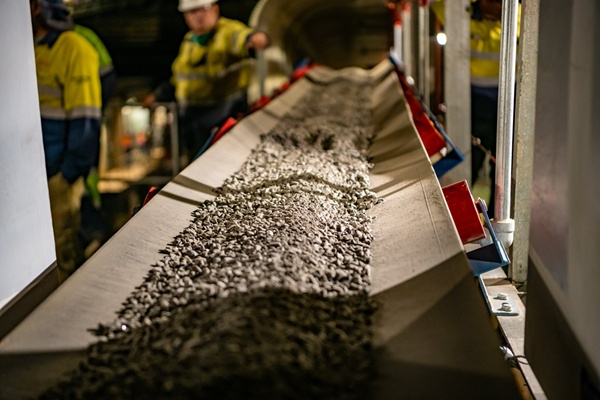At the current rate of emissions reduction, mining companies risk falling 40% short of the target needed to limit global warming to 1.5°C by 2030, as outlined in the Paris Agreement. This alarming prediction comes from a new report published by dss+, following a survey of 52 mining companies that highlights a significant gap between their stated ambitions and actual progress.
The report, titled "Decarbonising Mining in an Era of Growing Demand for Critical Metals and Minerals," reveals that mining companies reduced their emissions at an average annual rate of just 2% between 2018 and 2021. This rate, while still relevant, is far below the 4.5% reduction required to meet the sector's climate targets (see chart below).
The report attributes the gap to several structural factors, including declining ore quality, which forces operators to intensify extraction efforts and increases energy demands for ventilation and cooling in deep mines. Additionally, monitoring emissions particularly Scope 3 emissions generated downstream from transportation or processing remains a challenge. These emissions can account for up to 60% of the sector's total greenhouse gas output but are often overlooked in companies' decarbonization strategies. Executives interviewed by dss+ also cited fragmented decision-making across sites and insufficient emissions monitoring as obstacles to effective decarbonization, alongside policies that lack incentives for investment in clean technologies.
The dss+ report is not the first to raise concerns about the mining sector's slow progress in decarbonization. Data from some companies indicate stagnant results in emissions reduction. For instance, Rio Tinto reported Scope 1 and 2 emissions of 32.6 megatonnes in 2023, slightly down from 32.7 megatonnes in 2022 (adjusted for acquisitions). BHP also noted a slight increase in emissions, rising from 9.1 megatonnes in 2023 to 9.2 megatonnes in fiscal 2024.
Other organizations have highlighted the paradox facing the industry: it must meet the rising demand for critical metals necessary for the energy transition while simultaneously reducing its emissions. In a report titled "The Net Zero Roadmap to 2050," the International Finance Corporation (IFC) projected that copper and nickel production would need to increase by 200-300% by 2050 to meet climate targets, yet CO₂ emissions from their value chains could double.
In response to these challenges, solutions are emerging to accelerate decarbonization efforts and meet climate expectations. dss+ advocates for greater transparency in annual emissions reporting, emphasizing the need to account for Scope 3 emissions more effectively. Additionally, they recommend developing structured decarbonization plans and improving energy supply. The firm suggests adopting internal carbon pricing a concept where companies assign a virtual cost to CO₂ emissions, motivating them to reduce this cost through optimized financial decisions.
These proposals align with those suggested by the IFC, which aims to reduce emissions from the copper and nickel sectors by 90% by 2050 through transformative changes in their value chains. The IFC recommends adopting renewable energy sources, electrifying equipment, optimizing processes for energy efficiency, and leveraging automation and digitization to minimize inefficiencies. Proactive management of residual emissions through carbon offsets and CO₂ capture technologies is also crucial, along with fostering collaboration among companies, governments, and investors.
There is currently little evidence suggesting that these proposals are practically feasible or enough to transform an industry that is vital for the global energy transition but continues to emit excessive greenhouse gases. According to multiple sources, including Globaldata and McKinsey, the mining sector is one of the highest-emitting industries globally, accounting for between 4% and 7% of direct greenhouse gas emissions. When including downstream Scope 3 emissions, this figure rises significantly—up to 28% or approximately 19,440 megatons of carbon dioxide equivalent.
Successfully decarbonizing the mining sector will ultimately depend on the commitment of industry players and political leaders to overcome existing structural and financial barriers.
Louis-Nino Kansoun, Ecofin Agency










